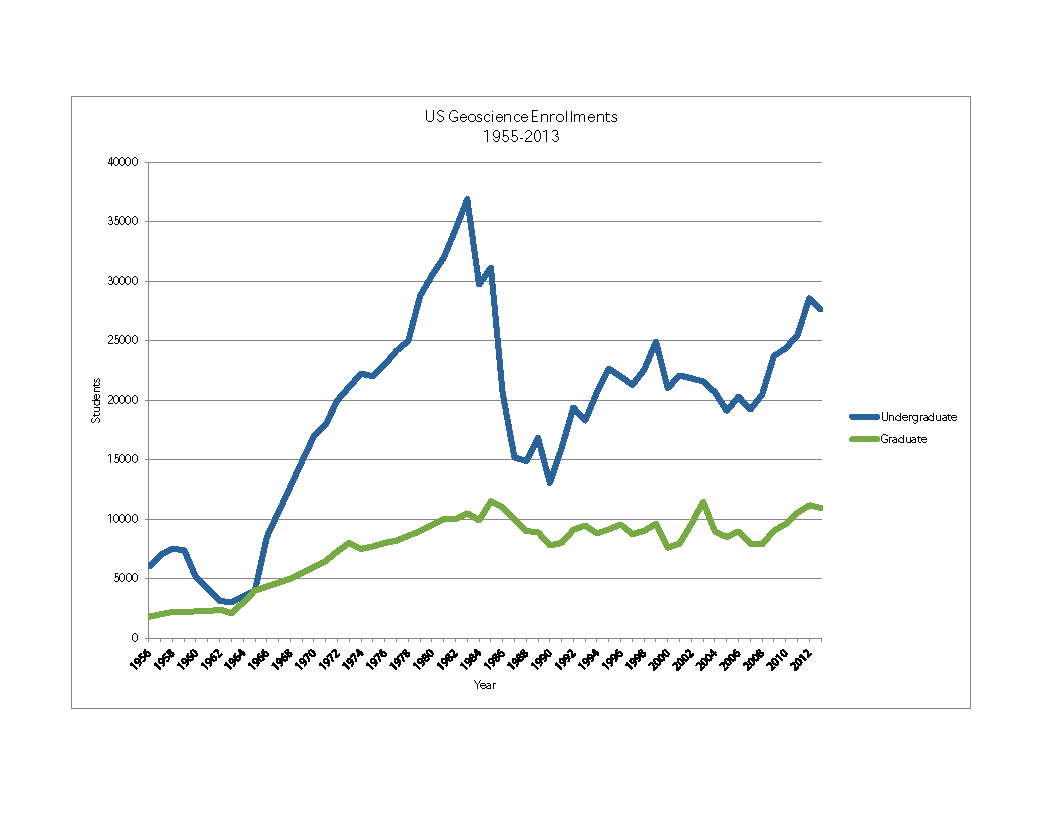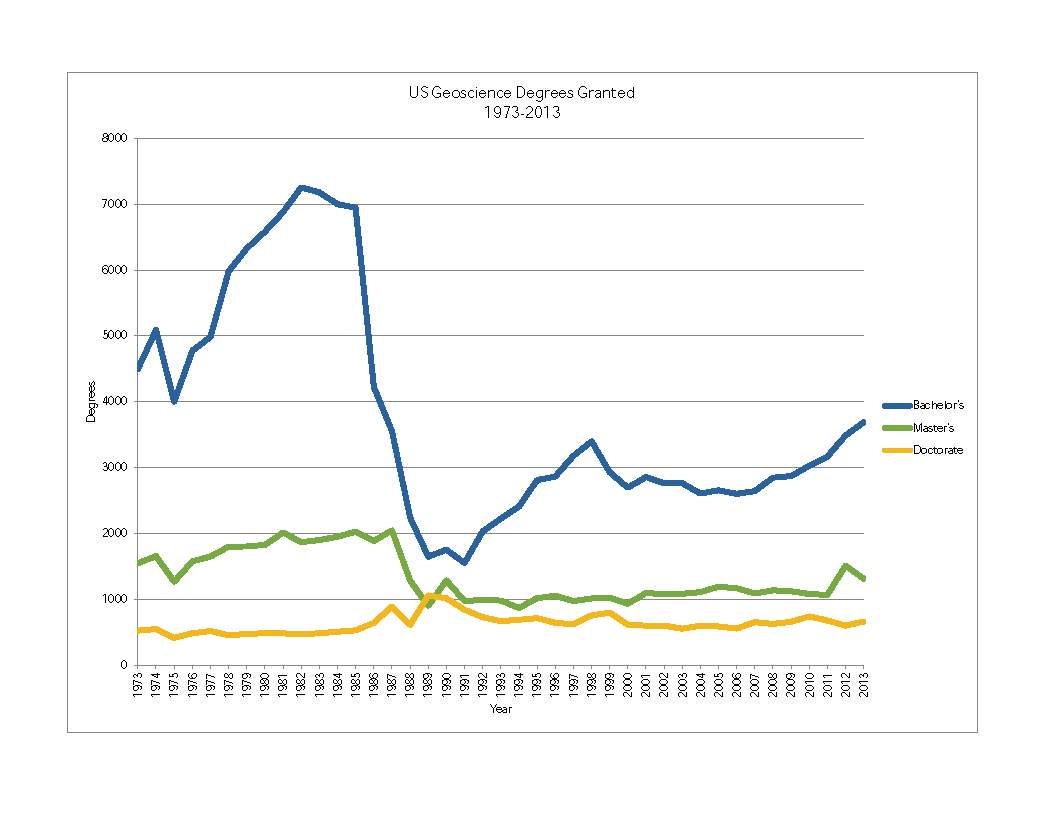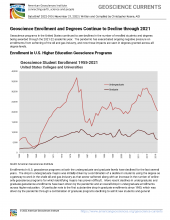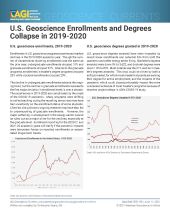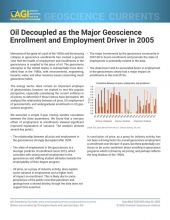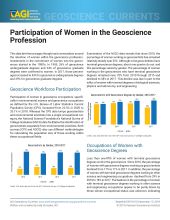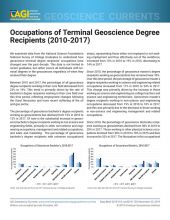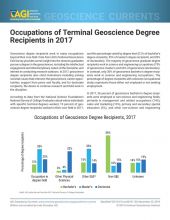Enrollments in U.S. geoscience programs remained robust during the 2012-2013 academic year. Though total enrollments retreated from their 2011-2012 highs, the drop in enrollments was less than 3%. The current enrollment trend likely reflects the strong employment outlook for geosciences relative to the continued weak U.S. job market.
Reports from many geoscience programs around the U.S. indicate that they are at or near capacity, and thus additional enrollment growth above the current levels is unlikely without either a major expansion at existing programs or the introduction of online geoscience degree programs.
Total enrollments in 2013 were 27,591 undergraduates and 10,935 graduate students.
Degree production at U.S. geoscience programs also remained strong. Undergradute degrees awarded continued to increase, reflecting the recent run-up in undergraduate enrollments. The sudden increase in Master’s degrees awarded in 2012 does not appear to be an anomaly. Even though awarded Master’s degrees have dropped, they remain above the levels seen since 1987.
This increase in Master’s degrees is likely in response to the strong job market, with an increasing number of students pursing geoscience graduate degrees to improve their employability. In addition, the large number of Master’s degrees awarded could also be attributed to Ph.D.-tracked students opting to graduate with Master’s degrees – excited for job opportunities outside of academia, given the extremely competitive job market in pure research and academic fields.
The total degrees awarded in 2013: 3691 Bachelors, 1313 Masters, and 663 Doctorates.


